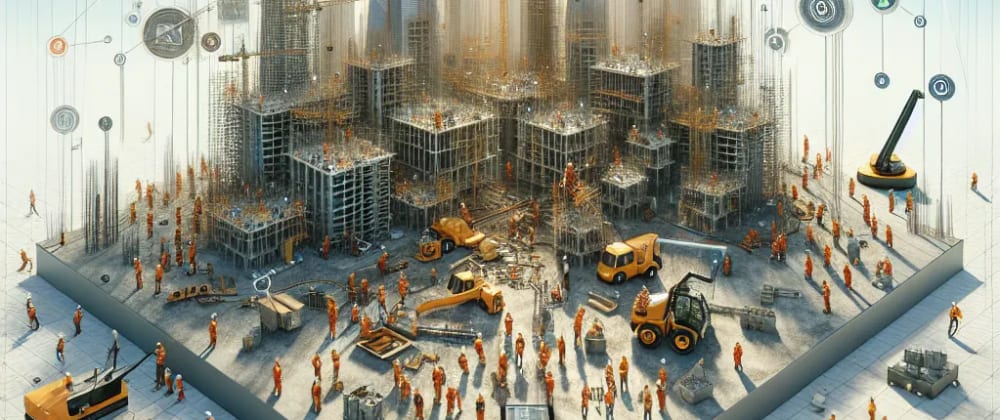How IoT is Transforming Construction Site Safety and Efficiency
Construction sites have traditionally been fraught with risks and inefficiencies. However, the advent of the Internet of Things (IoT) is set to disrupt the status quo, ushering in a new era of heightened safety and operational efficiency. Let's delve into the myriad ways IoT is making construction sites smarter, safer, and more efficient.
The Internet of Things: A Quick Primer
Before we dive in, let's get a handle on what IoT actually encompasses. The Internet of Things refers to a network of interconnected devices that can communicate with each other and with central systems to collect, share, and analyze data. These devices often include sensors, wearable tech, machinery, and more, all aimed at creating an intelligent ecosystem.
Enhanced Safety Through Wearable Technology
Wearable technology is one of the most exciting applications of IoT for construction site safety. Here’s how:
Smart Helmets: Equipped with sensors that monitor environmental conditions—such as temperature, toxic gases, and even the wearer's vital signs—smart helmets can alert workers of immediate dangers in real-time.
Safety Vests: Embedded with IoT sensors, these vests can detect falls, ensure proper posture, and even guide workers to safe zones during emergencies.
Real-time Monitoring and Predictive Maintenance
IoT facilitates real-time monitoring and predictive maintenance, significantly improving operational efficiency:
Equipment Tracking: RFID and GPS sensors attached to machinery and tools help in tracking their location, usage, and condition. This ensures that equipment is always available when needed and minimizes downtime.
Predictive Maintenance: By collecting data on the performance of machinery, IoT systems can predict when a machine might fail and schedule maintenance before it happens. This prevents costly breakdowns and prolongs the lifespan of equipment.
Smart Surveillance Systems
Security is paramount on a construction site, and IoT is enhancing this through smart surveillance systems:
Drones: Equipped with high-definition cameras and sensors, drones patrol construction sites to detect unauthorized access, potential hazards, and progress assessment. They provide real-time footage and data that can be analyzed to ensure safety and security.
Connected Security Cameras: These cameras don’t just record footage; they can analyze movements and alert supervisors to any unsafe practices or breaches in real-time.
IoT-Driven Data Analytics
One of the most transformative aspects of IoT in construction is its ability to generate and analyze vast amounts of data:
Optimized Resource Allocation: By analyzing data from IoT devices, companies can optimize the allocation of materials, labor, and machinery, ensuring that resources are used efficiently and waste is minimized.
Performance Metrics: IoT allows for the continuous monitoring of KPIs (Key Performance Indicators). This data helps in making informed decisions, improving productivity, and reducing bottlenecks.
Case Studies: Real-world Applications
Several companies are already leveraging IoT to enhance their construction processes:
Bechtel: One of the largest construction and engineering firms globally, Bechtel uses IoT to monitor the atmospheric conditions on their sites to ensure worker safety and compliance with environmental regulations.
Skanska: A Swedish multinational construction and development company, Skanska, employs wearable technology to monitor worker health and safety, reducing on-site accidents significantly.
Challenges and Future Prospects
While the benefits are significant, integrating IoT into construction also comes with challenges:
Data Security: Ensuring that the data collected and transmitted is protected from cyber threats is paramount.
Interoperability: Different IoT devices and platforms must be able to communicate seamlessly, which requires standardization and collaboration across the industry.
Looking ahead, as IoT technology continues to evolve, its integration into construction sites will become even more seamless and transformative. The construction sites of the future will not only be safer and more efficient but will also be intelligent ecosystems that adapt and respond in real-time.
Conclusion
The integration of IoT into construction sites marks the dawn of a new era. From wearable technology that enhances worker safety to data analytics that optimize every aspect of operations, IoT is set to revolutionize the construction industry. Embracing this technology today will pave the way for smarter, safer, and more efficient construction processes, ultimately heralding a future where construction sites are not just places of work, but intelligent, interconnected hubs of activity. The future of construction is not just building structures; it's about building smarter.


















